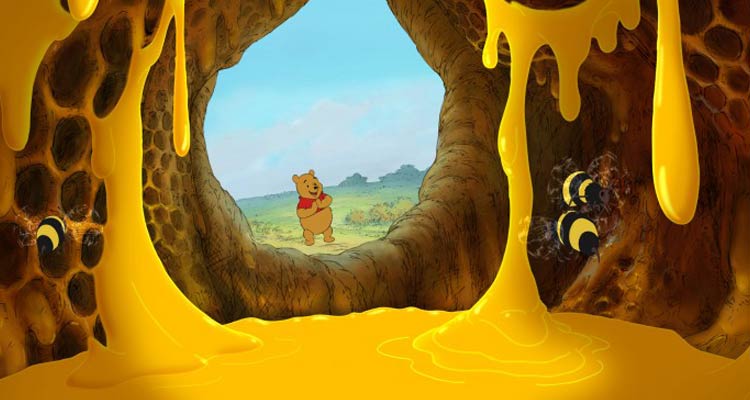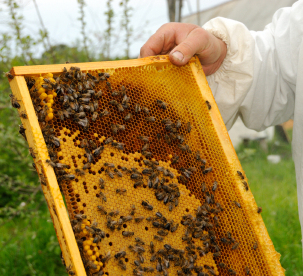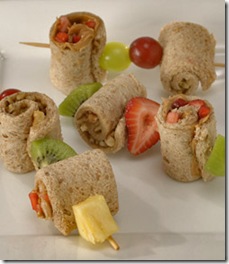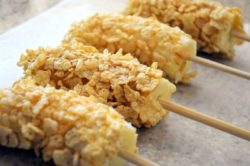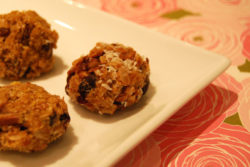Since 1989, September has been designated National Honey Month.
That only makes sense because the end of summer denotes more than just back to school. It’s the end of honey collection season for most U.S. beekeepers.
But whether or not your local bees have called it quits for 2015, we should be sensitive to the fact that it’s not easy to be a bee these days.
According to the U.S. Department of Agriculture (USDA), beekeepers lost 42.1 percent of their managed honey bee colonies from April 2014 to April 2015—about eight percent more than the previous year.
That’s bad news for the beekeepers, the bees, and all of us, because one third of all vegetable and fruit crops are pollinated by honey bees. In fact, some estimate that more than three-quarters of the world’s food supply is at least indirectly linked to the honey bee.
The plight of the honey bee has actually been documented for the last decade. Researchers believe reasons for their demise include climate change, mite infestations, and the use of insecticides (primarily neonics, used on lawns, gardens, and to protect crops such as corn). Science is aware of the situation and working to remedy it. Although bees can be fairly readily replaced, the greater concern seems to be that the commercial beekeepers are finding it difficult to stay in business.
[embedvideo id=”GqA42M4RtxE” website=”youtube”]
“Such high colony losses in the summer and year round remain very troubling,” said Jeff Pettis, a spokesman for the USDA, which considers a loss of more than 18.7 percent of hives to be economically unsustainable.
That said, bees work hard for their honey. According to the Canadian Honey Council, a single bee would need to tap roughly two million flowers and fly 50,000 miles to produce one pound of honey on its own. Fortunately, bees have plenty of help in the hive.
There are approximately 300 different varieties of honey, each with a unique taste based on the kind of blossoms from which the nectar is drawn.
In addition to their work in pollination, bees also produce honey that is used not only directly but as a sweetening agent in many of the foods we eat, particularly baked goods. The National Honey Board notes that honey is also used to soothe sore throats, provide an energy boost, and supply benefits for skin and hair care.
“Kids in particular have a big tummy for sweet treats such as chocolate and candies,” note the food writers at Blogspot.com, “but too much sweets and sugar is not good for growing kids. . . . Honey is sweet and honey is healthy. You can use them on your kid’s snacks anytime.”
[embedvideo id=”UnUxRZRgsp8″ website=”youtube”]
The National Honey Board website is one of many bursting with honey recipes. For Snack of the Week purposes, we’ll look at three easy-to-make ideas that will sweeten your child’s day.
Silly sushi roll-ups: Not sushi at all, but made with whole wheat bread (or flatbread), all natural peanut butter, honey, and fresh fruit, as described by ThisMamaCooks.com. These treats can be personalized with different fruits, including grapes, kiwi, strawberries, or pineapple as well as nuts (optional).
Banana cereal pops: A simple and healthy snack from the Healthy Snacks for Your Kids section at blogspot.com. Simply dip your banana in a bit of honey, roll it in your favorite cereal, and serve it on a Popsicle stick. This website also offers a recipe for honey fruitsicles, which will require freezing.
Peanut butter and honey snack balls: Check out popsugar.com for specifics of combining a cup of honey with a cup of all-natural peanut butter, dried fruit, and granola. It’s a concept that is easy to execute and offers multiple ingredient options.
Do you have a favorite honey recipe? Please share with us, and be sure to look for more Snack of the Week suggestions and information on healthy eating at Learning Liftoff’s food pages.
Featured Image via Disney
